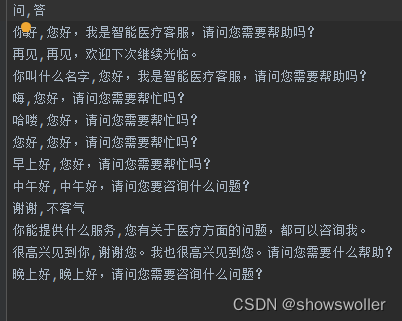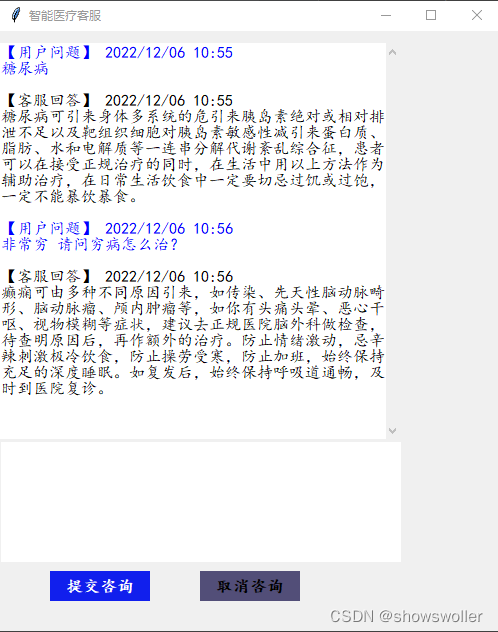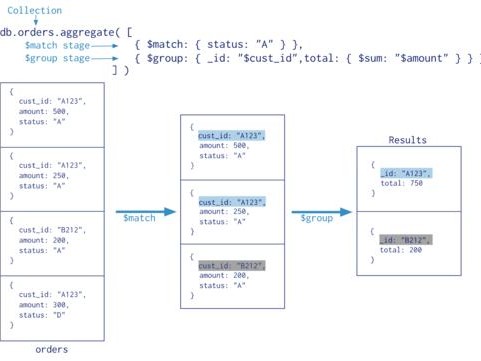需要源碼和數據集請點贊關注收藏後評論區留言私信~~~
一、問答智能客服簡介
QA問答是Question-and-Answer的縮寫,根據用戶提出的問題檢索答案,并用用戶可以理解的自然語言回答用戶,問答型客服注重一問一答處理,側重知識的推理。
從應用領域視角,可将問答系統分爲限定域問答系統和開放域問答系統。
根據支持問答系統産生答案的文檔庫、知識庫,以及實現的技術分類,可分爲自然語言的數據庫問答系統、對話式問答系統、閱讀理解系統、基于常用問題集的問答系統、基于知識庫的問答系統等。
智能問答客服功能架構
典型的問答系統包含問題輸入 問題理解 信息檢索 信息抽取 答案排序 答案生成和結果輸出等,首先由用戶提出問題,檢索操作通過在知識庫中查詢得到相關信息,并依據特定規則從提取到的信息中抽取相應的候選答案特征向量,最後篩選候選答案結果輸出給用戶

智能問答客服框架
1: 問題處理 問題處理流程識别問題中包含的信息,判斷問題的主題信息和主題範疇歸屬,比如是屬于一般類問題還是屬于特定主題類問題,然後提取與主題相關的關鍵信息,比如人物信息、地點信息和時間信息等。
2 :問題映射 根據用戶咨詢的問題,進行問題映射消除歧義。通過字符串相似度匹配和同義詞表等解決映射問題,根據需要執行拆分和合并操作。
3 :查詢構建 通過對輸入問題進行處理,将問題轉化爲計算機可以理解的查詢語言,然後查詢知識圖譜或者數據庫,通過檢索獲得相應備選答案。
4 :知識推理 根據問題屬性進行推理,問題基本屬性如果屬于知識圖譜或者數據庫中的已知定義信息,則可以從知識圖譜或者數據庫中查找,直接返回答案。如果問題屬性是未定義類問題,則需要通過機器算法推理生成答案。
5: 消岐排序 根據知識圖譜中查詢返回的一個或者多個備選答案,結合問題屬性進行消歧處理和優先級排序,輸出最佳答案。
二、智能醫療客服問答實戰
定制性智能客服程序一般需要實現選擇語料庫,去除噪聲信息後 根據算法對預料進行訓練,最後提供人機接口問答對話,基于互聯網獲得的醫學語料庫,并通過餘弦相似度基本原理,設計并開發以下問答型智能醫療客服應用程序
項目結構如下

效果展示
下面是csv文件中定義的一些病例

預先定義好的歡迎語句


運行chatrobot文件 彈出以下窗口 輸出問題後點擊提交咨詢即可

對于語料庫中沒有的問題會自動推斷給出答案(通常不太準确)


三、代碼
部分代碼如下 全部代碼和數據集請點贊關注收藏後評論區留言私信
# -*- coding:utf-8 -*-
from fuzzywuzzy import fuzz
import sys
import jieba
import csv
import pickle
print(sys.getdefaultencoding())
import logging
from fuzzywuzzy import fuzz
import math
from scipy import sparse
from sklearn.feature_extraction.text import CountVectorizer
from sklearn.feature_extraction.text import TfidfTransformer
from scipy.sparse import lil_matrix
from sklearn.naive_bayes import MultinomialNB
import warnings
from tkinter import *
import time
import difflib
from collections import Counter
import numpy as np
filename = 'label.csv'
def tokenization(filename):
corpus = []
label = []
question = []
answer = []
with open(filename, 'r', encoding="utf-8") as f:
data_corpus = csv.reader(f)
next(data_corpus)
for words in data_corpus:
word = jieba.cut(words[1])
tmp = ''
for x in word:
tmp += x
corpus.append(tmp)
question.append(words[1])
label.append(words[0])
answer.append(words[2])
with open('corpus.h5','wb') as f:
pickle.dump(corpus,f)
with open('label.h5','wb') as f:
pickle.dump(label,f)
with open('question.h5', 'wb') as f:
pickle.dump(question, f)
with open('answer.h5', 'wb') as f:
pickle.dump(answer, f)
return corpus,label,question,answer
def train_model():
with open('corpus.h5','rb') as f_corpus:
corpus = pickle.load(f_corpus)
with open('label.h5','rb') as f_label:
label = pickle.load(f_label,encoding='bytes')
vectorizer = CountVectorizer(min_df=1)
transformer = TfidfTransformer()
tfidf = transformer.fit_transform(vectorizer.fit_transform(corpus))
words_frequency = vectorizer.fit_transform(corpus)
word = vectorizer.get_feature_names()
saved = tfidf_calculate(vectorizer.vocabulary_,sparse.csc_matrix(words_frequency),len(corpus))
model = MultinomialNB()
model.fit(tfidf,label)
with open('model.h5','wb') as f_model:
pickle.dump(model,f_model)
with open('idf.h5','wb') as f_idf:
pickle.dump(saved,f_idf)
return model,tfidf,label
class tfidf_calculate(object):
def __init__(self,feature_index,frequency,docs):
self.feature_index = feature_index
self.frequency = frequency
self.docs = docs
self.len = len(feature_index)
def key_count(self,input_words):
keys = jieba.cut(input_words)
count = {}
for key in keys:
num = count.get(key, 0)
count[key] = num + 1
return count
def getTfidf(self,input_words):
count = self.key_count(input_words)
result = lil_matrix((1, self.len))
frequency = sparse.csc_matrix(self.frequency)
for x in count:
word = self.feature_index.get(x)
if word != None and word>=0:
word_frequency = frequency.getcol(word)
feature_docs = word_frequency.sum()
tfidf = count.get(x) * (math.log((self.docs+1) / (feature_docs+1))+1)
result[0, word] = tfidf
return result
if __name__=="__main__":
tokenization(filename)
train_model()
創作不易 覺得有幫助請點贊關注收藏~~~









